
Journal of Law, Information and Science


|
Home
| Databases
| WorldLII
| Search
| Feedback
Journal of Law, Information and Science |

|
MARTIN K. PURVIS[*] AND MARYAM A. PURVIS[**] AND GEORGE L. BENWELL[***]
A single piece of legislation, the Resource Management Act, governs the management of environmental resources in New Zealand. It establishes procedural requirements and time constraints for all decision-making activities related to governmental environmental management. The present paper describes a model, based on coloured Petri nets, that is under development to facilitate understanding of the Act and to examine performance characteristics of legal processes defined in the Act.
The New Zealand Resource Management Act 1991 (RMA) [1] is a comprehensive legal framework established to integrate the management and to promote the sustainability of the country's natural resources. Because it represents a ground-breaking attempt to provide a unified legal framework for all laws relating to the environment, it has attracted international attention. At the present time it is difficult to judge how successfully the Act meets the objectives that were set out for it, but because of the economic impact that it can have on individual concerns within the society, there have been numerous calls from various interest groups to introduce reforms to the Act [2]. The purpose of the present work is to develop models that explicitly represent the dynamic processes that are defined or constrained by the Resource Management Act and thereby provide more objective information that can be of assistance in measuring the performance of the Act (as it is currently interpreted).
In the following sections we will (a) discuss some issues associated with legislative modelling, (b) briefly describe some aspects of the Act that will be the focus of the present discussion, (c) describe the modelling approach, which is based on coloured Petri nets, (d) show some examples of simulation results, and (e) outline the future directions of this work.
It is widely recognised that Western legal institutions around the globe are in a state of crisis [3]. With each passing year legal systems are becoming more complex and unwieldy, with the result that society is becoming increasingly litigious, and the cost of legal services is rapidly outstripping the growth in income. Many groups find themselves more or less cut off from their legal rights because of the high costs involved, the often inordinate complexity of rules and procedures, and the frustrating delays involved in bringing proceedings to a conclusion. Much of the past work to provide computational assistance to legal understanding has focused on efforts to codify the static logical structure of statutory law into logical programs and to apply natural language understanding techniques to the area of case law [4,5]. However, although legal systems have sets of rules that attempt to be logical, they do not represent "closed" systems of pure logic. Instead, they entail additional semantic considerations involving common-sense evaluations concerning the real world, which can render attempts to build purely logical legislative constructions unmanageable.
In order to grapple with these difficulties it can be advantageous to go beyond the notion of modelling the law as a set of static rules and consider the law in the context of the dynamic real-world processes which interact with it. By modelling these processes and the manner in which they are affected by the legal structures, we can arrive at a greater understanding of the laws and the behaviours that they modify or constrain in the world. Moreover, when the law under investigation explicitly describes procedures and specific behavioural constraints associated with them, then the law itself has an associated dynamic behaviour. Such is the case with the New Zealand Resource Management Act. It is our view that understanding can be enhanced by developing a mental picture, or graphical model, of this dynamic behaviour that shows how all the given legal procedures operate and interact. Execution of the model will then display the dynamic behaviour and provide a perspective that goes beyond the customary view of legal systems as (static) logical structures.
The Resource Management Act governs the management of virtually all aspects of the natural and physical environment of New Zealand. One of its principle themes is deregulation. Although its goal is sustainable resource managements, "its structure reflects a determination on the part of the New Zealand government for a more open and competitive economy ... and towards a decentralised administration of regulatory systems" [6]. This reflects a fundamental policy change away from an earlier era of excessive governmental regulation, which had previously led to conflicting and anomalous policies [7]. The RMA was designed to be nonprescriptive and, rather than telling people how to do things, sets up a framework (in this case, a specified set of consultative procedures) for establishing limits on what can and cannot be done to the environment. Since the law is less explicitly restrictive than previous legislation, there is a wider role for public involvement and participation in the decision-making process. (In fact the New Zealand environment will not be properly safeguarded unless the public participates in these processes in an informed manner.) Thus, from a modelling perspective, the key distinguishing feature of the New Zealand RMA is that it is more process-oriented than previous legislation.
As stated above, the wider scope for public participation offered by the RMA does not, by itself, guarantee that the natural environment will be protected. Some observers feel that the RMA could prove to be less protective of the environment than previous law, since the Act provides relatively wide boundaries, within which individuals or groups can do more or less what they like [6]. Ultimately, the degree to which the environment is protected and efficiently managed will depend on the degree to which the public understands the procedures defined within the Act. However, the broad scope of the RMA, and the interlocking nature of many of the processes described in it, can make it important to have a clear view of how the processes work together, and on a scale that may go beyond the local view of individual specialists. For this reason we believe that a dynamic model of the Resource Management Act can assist professionals who may even already be familiar with the workings of some specific (local) parts of the Act. In general the model has two fundamental purposes:
(1) It can assist people and organisations to predict the time duration for some legal processes to be carried out and whether certain sequences of events could take place. In particular it can help reveal the possibility of process bottlenecks that could arise.
(2) It can assist lawmakers, legal advisors, and governing authorities to examine how various processes could be altered according to differing real-world constraints or to alternative legal interpretations of parts of the Act. There is already a call for modification of parts of the Act because of perceived inadequacies that allegedly can affect process performance [2].
Before describing some of the details of our coloured Petri net modelling approach, we first outline some elements of the Resource Management Act that will be the basis of further discussion. Although the RMA represents an effort to streamline previous legislation, it is still a large legal document (its current legal description covers 586 pages). In order to present how the model works, we will narrow our discussion to an important subsection -- that part of the Act which covers the acquisition of resource consents (sections 87-150 and 218-246 of the Act [1]). Resource consents are primarily land-use consents, such as subdivision consents, but they can also include coastal permits, water permits, and discharge permits.
In New Zealand there are three levels of government: the central government, regional councils, and territorial councils. (These correspond very approximately in the U.S. to the federal government, states, and counties.) The RMA distributes governing authority over environmental concerns among these three governmental levels as follows:
Central Government: Overview role; developing policies for managing resources, performance and quality standards, mineral allocation; aspects of coastal management; management of toxic wastes, explosives, and other hazardous substances.
Regional Councils: Coordination; regional policy statements; regional plans, water and soil management, management of geothermal resources, natural hazards mitigation/planning; regional aspects of hazardous substances; pollution management and air pollution control; aspects of coastal management.
Territorial Councils: district plans; control of land-use and subdivision; noise control; control for natural hazards avoidance and mitigation; local control of hazardous substances use.
Resource consent application processes for all three government bodies are essentially the same, and this is one of the ways in which the RMA has "streamlined" previous legislation. Resource consents are largely the responsibility of the territorial councils, but consents from regional councils may frequently be required, such as when discharges into water may be involved. Any consent applications that involve multiple governmental authorities will often entail concurrent resource consent processes that must ultimately be conjoined at certain points and brought into consistency by means of joint hearing and joint decision making. This is a specific example where parallel distributed processes must interact and be brought into synchrony.
The specific modelling method employed is that of coloured Petri nets (CP-nets) [8,9]. CP-nets have a well-defined semantics and combine
(a) the net structure, essentially the distributed graphical representation of traditional place/transition Petri nets, with
(b) structured (coloured) tokens that can be of arbitrary complexity, and
(c) a syntax and semantics for the evaluation of net inscriptions.
The complexity of a computation can then be distributed among these CP-net components as befits the problem [8]. Furthermore, the net can be refined either (a) by the substitution of transitions by appropriately designed and interfaced subnets or (b) by the elaboration of the existing net inscriptions to cover more detailed computations. Since the present application involves distributed, concurrent processes having complex evaluations, CP-nets modelling is appropriate.
A top-level view of a major section of the model net structure, involving the development of district plans and the application for district resource consents, is shown in Figure 1. In order to reduce the complexity of the figure, the net inscriptions, time delays, and token assignments are not shown. Also places and transitions that are connected by both input and output arcs are shown with a single, two-headed arc connecting them. Across the top of Figure 1 are six places (shown as ellipses) that represent repositories of agents that participate in the development of district plans and the evaluation of resource consents, along with the "Applicants" place shown at the bottom. The place marked "Government Technical Resources (L)" refers to local government officials, meeting rooms, and other equipment or utilities that may be needed to carry out particular operations[1]. The place marked "Maori Authorities" refers to organisations associated with Maori people, who are the indigenous people of New Zealand and who must be consulted in certain matters concerning resource usage and management.
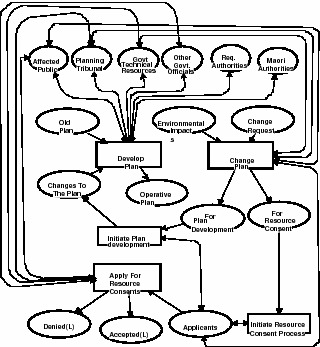
Figure 1. Top-level Model of Resource Consent and Planning Processes
Notice from Figure 1 how the district plan development process can interact with the procedures associated with resource consent applications. Suppose, for example, an applicant applies for a resource consent and has it denied because the proposed resource usage does not conform to the district plan. This same applicant might then go ahead and decide to apply for a change in the district plan in order to eliminate this conflict. On the other hand, another case and different circumstances could begin with a request to alter the district plan and end up as a straightforward resource consent application.
Figure 2 shows a refinement of part of Figure 1: the transition shown in the lower left of Figure 1, "Apply for Resource Consent", is refined by hierarchical substitution into the net shown in Figure 2. Each of the three transitions in Figure 2 is further refined in the model. The middle transition in Figure 2, "Evaluate and Notify", involves an initial examination of the application to determine whether a technical report should be commissioned or whether the public should be notified so that they make submissions. A refinement of this transition is shown in Figure 3. The bottom transition in Figure 2, "Conduct Hearings and Make Decisions", involves processes associated with conducting public hearings and making the consent acceptance decision, a refinement of which is shown in Figure 4.
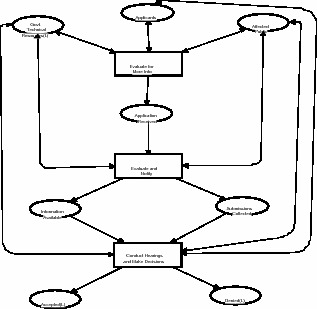
Figure 2. The Resource Consent Process.
Places with the same name (for example, the “Ready for Decision” place) in Figures 2 and 3 are “fusion” nodes and, as far as the underlying model is concerned, represent only a single place.
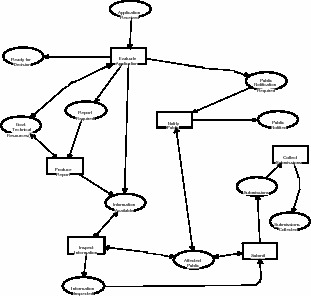
Figure 3. Refinement of the “Evaluate and Notify” transition.
Figures 1 through 4 show components of the overall model associated with resource consent application processes for district governments. There are also similar model components for the regional and national levels of government. These components are connected by Petri net transitions that model joint hearing processes (not shown).
Associated with each process in the model are functional and timing details concerning its operation. Parameters can be adjusted to conform with information derived from expert local experience. When the model is then provided with an appropriate set of input tokens and executed, performance can be examined. For illustrative purposes we show a few simple examples that show how some small parameter changes can affect performance.
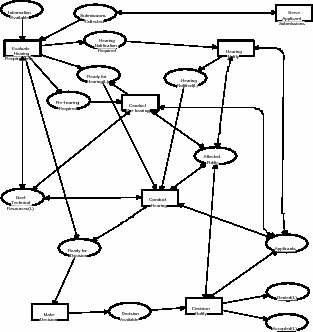
Figure 4. Refinement of the “Conduct Hearings and Make ...” transition.
In each of the next three figures (Figures 5-7), we consider how the local government would process the same collection of 65 consent applications. 10 of the applications are judged at the initial evaluation stage to be incomplete and not evaluated further, 40 of them are judged to require public notification (inviting public submissions concerning the consent application), and 35 of them are ultimately approved by the local government. There are four types of public officials, and different types are required for specific stages (transitions) of the process. Figure 5 shows the case where there are a total of 8 government officials available for this processing, 2 are required (for each application) to determine for the initial evaluation stage, and 4 are required for public hearings and the decision-making process (again, for each application). The chart line with the black box markers indicate the running cumulative total of applications that have been received (judged not incomplete). The chart line with the open white boxes show the running total number of applications that require notifications, and the chart line with the grey boxes show the cumulative total of applications that have been approved. The system takes 2250 time units to process all 65 applications.
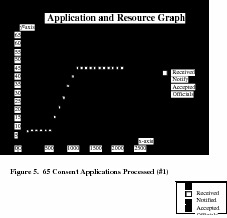
Figure 6 shows the case when we increase the number of public officials available to 12. This time, all 65 applications are complete in 1818 time units.
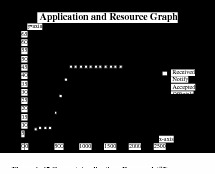
Figure 7 shows another case when 12 public officials are available, but there is a different mix of public officials required at the various processing stages. The 65 applications are here processed in 1238 time units.
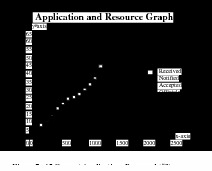
There are significant differences not only in the total processing time but also in build-up of waiting queues within the system.
Within the modelling framework that we are developing, it is feasible to build into the individual process blocks more powerful and sophisticated evaluation mechanisms, which can combine some of the advantages offered by some previous efforts in the area of complex legal reasoning. In particular, we intend to embed case-based reasoning modules that are similar to those described by Ashley [10] in future versions. This will be based on actual Resource Management Act cases that we are beginning to collect. This is not meant to suggest that any of these processes could be automated, but only to assist in the examination of how possible Resource Management Act scenarios could unfold when certain types of cases are presented.
As one of the New Zealand government's own information documents emphasises: "all sections in the Act should be read in the context of the whole, with no one section interpreted in isolation.". Our goal is to assist all participants in that difficult process by modelling the working of various components of the Act in concert.
References
[1] Resource Management Act, 1991, R. S. Vol. 32, New Zealand Government, Wellington (1994).
[2] A. Dormer, “The Resource Management Act 1991, the Transition and Business”, New Zealand Business Roundtable, Wellington (1994).
[3] D. H. Berman and C. D. Hafner, “The Potential of Artificial Intelligence to Help Solve the Crisis in Our Legal System”, CACM, 32:8 (1989), pp. 928-938.
[4] A. V. D. L. Gardner, “Law Applications”, in Encyclopedia of Artificial Intelligence, Volume 1, S. Shapiro (ed.), Wiley Interscience (1987), New York, pp. 456-464.
[5] M. J. Sergot, F. Sadri, R. A. Kowalski, F. Kriwaczek, P. Hammond, and H. T. Cory, “The British Nationality Act as a Logic Program, CACM, 29:5 (1986), pp. 370-386.
[6] P. A. Memon, Keeping New Zealand Green, University of Otago Press, Dunedin (1993), pp. 95-96.
[7] P. A. Memon and G. A. Wilson, “Indigenous Forests”, in Environmental Planning in New Zealand, P. A. Memon and H. C. Perkins (eds.), The Dunmore Press, Palmerston North (1993), pp. 97-119.
[8] K. Jensen, “Coloured Petri Nets: A High Level Language for System Design and Analysis” in Advances in Petri Nets 1990, Springer-Verlag, Berlin (1990).
[9] Design/CPN Version 2.0, Metasoft Corporation, Cambridge, MA (1993).
[10] K. D. Ashley, Modeling Legal Argument, MIT Press, Cambridge MA (1990).
[*] Computer and Information Science, University of Otago, Dunedin, New Zealand
tel: +64 (03) 479-8318, email: purvis@otago.ac.nz
[**] Computer and Information Science, University of Otago, Dunedin, New Zealand
tel: +64 (03) 479-8301, email: tehrany@commerce.otago.ac.nz
[***] Computer and Information Science, University of Otago, Dunedin, New Zealand
tel: +64 (03) 479-8300, email gbenwell@otago.ac.nz
[1] The use of the word "resources" here is to be distinguished from the way it is used in "resource consents", where it refers to natural resources.
AustLII:
Copyright Policy
|
Disclaimers
|
Privacy Policy
|
Feedback
URL: http://www.austlii.edu.au/au/journals/JlLawInfoSci/1995/13.html